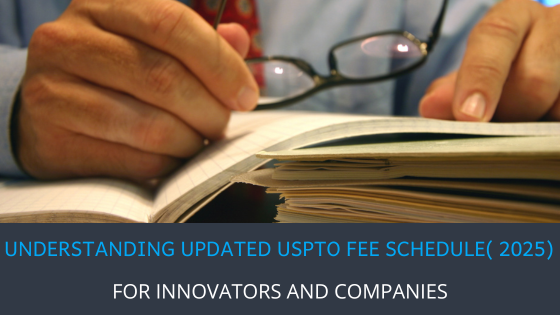It is often difficult for small to medium sized enterprises (SMEs) to estimate the cost of patenting an innovation, due to unforeseeable events that arise in the course of registration and maintenance. However, you can get a fairly accurate estimate by asking your attorney the right questions. Here are 5 questions you must ask your attorney about the patent cost:
- The billing options for the attorney’s fees
- The attorney’s billing rate
- The component of the attorney’s fees
- The attorney’s years of experience
- The end-to-end cost of registering and maintaining the patent
This process aligns closely with understanding strategic approaches to patent filing to optimize cost and efficiency.
The Billing Options
Attorneys generally charge fees based on a flat fee or hourly rate fee structure. With a flat fee structure, you would pay the attorney a fixed sum of money for specific services. Gaining insight into cost estimates for filing utility patents globally can help in choosing the right fee structure. On the other hand, with an hourly rate fee structure, you would pay the attorney an agreed hourly rate for the time spent on your patent registration.
Startups generally prefer a flat fee structure, because of the certainty of costs. The patent process is highly complex and unpredictable. At an hourly rate, you may spend thousands of dollars for the time spent by the attorney resolving spurious events. Moreover, IP attorneys tend to have hourly rates that are 50% more than other attorneys.
Where an hourly rate is agreed upon, it is typical for the fees to be capped at a predetermined limit. The benefit of this is the assurance that you would not spend beyond a certain limit. This helps you manage your costs efficiently and budget appropriately.
Bear in mind that the type of patent and complexity of the invention may influence the attorney fees. For example, provisional patents are cheaper than non provisional patents. In addition, learning about ways to control patent costs is crucial in budget planning. Also, a mechanical patent may be cheaper than a chemical patent. A request to write a patent application may also range from a fee of $10,000 to $12,000, depending on the technology involved. It is important to ask questions and choose the most suitable billing structure.
The Attorney’s Billing Rate
Generally, a lower billing rate means lesser attorney fees. However, this is not always the case. A lower billing rate may be misleading if you have an attorney that takes a lot of time to get the job done.
Alternatively, if you have a high volume of work, such as a patent registration in multiple jurisdictions or a patent of several innovations, you may request a discounted fee from your attorney.
When granted a discount, it is important to carefully read through the terms and conditions. Some firms will start out with a very high billing rate and then, give a discount, which when applied, equates to the original attorney fees the firm charges its clients. For some other firms, their fees are so high that even with a discount, the discounted billing rate is more than what other firms would charge for a similar scope of work.
The Components of the Bill
Selecting an appropriate billing structure is half the journey. Knowing what the bill covers and does not cover is also essential. You don’t want to receive an invoice from your attorney for every new request from the IP Office.
Therefore, an agreed fee structure should come with a clearly defined scope of work. It is important to agree with your attorney upfront about expectations for the registration process. For example, the quotation for the initial preparation and filing of a utility non-provisional application should clearly state what will be covered and what will not be covered by the fees.
Some startups prefer to negotiate a fee, usually a few thousand dollars, for all potential matters that may arise during the registration process of the patent. Such matters may include requiring the attorney to execute an additional document, adding a new matter to the initial patent draft, or responding to additional office actions.
The Attorney’s Experience
Generally, the more experienced an attorney is, the higher the attorney’s fees. However, a more experienced attorney will be able to give a more accurate estimate, depending on the vagaries of the process. A more experienced attorney will also be able to better anticipate spurious issues that may arise during the registration process.
End-to-End Cost
It is not uncommon for startups to abandon a patent midway, because of the cost involved in registering and maintaining one. One way to have visibility on the cost of the entire process before filing for a patent is to ask your attorney about the end-to-end patent cost.
Patents will usually require miscellaneous fees and issue fees to be paid to the government. The amount will generally depend on the size of your startup and whether you’re expediting the registration process. There are also other ongoing fees to be paid after the issuance of the patent, such as annuity fees.
It is also typical to have 2 to 4 rounds of arguments with the patent office. Each one of those rounds may cost $2,000 to $3,000. To manage the cost, you should ask your attorney to give a practical estimate for the entire registration process. For example, $10,000 to write the patent application, $10,000 to argue the application and manage communications with the patent office, and $10,000 for issuance of the patent and government fees.
The TIP Tool
The TIP tool eliminates the uncertainty that comes with your attorney taking a guess on the patent cost. By relying on data, the TIP tool is able to predict the patent costs and registration timeline.
With the TIP tool, you can estimate how many rounds of arguments would likely be involved in your application through the tool’s analysis of your idea. This will help you know when your attorney, on an hourly rate billing, prolongs the argument to raise the attorney fees.
Source: Triangle IP
Knowing up front what it would cost to patent your idea helps to build your patent portfolio strategy and not abandon some applications along the way. The TIP tool also helps you know your chances of getting your patent approved by giving you a percentage of patentability. If this percentage is low, you may consider foregoing registration or modify your patent application.
Key Takeaways
You must ask questions about patent costs to achieve the protection you desire within the budget you can afford. However, you can only get the right response if you ask the right questions. This is more so where the patent process is subject to unpredictable vagaries that may impact the budget of SMEs.
The fees you’re paying have to make sense and the services you receive must be of value for the money you’re spending. The TIP tool simplifies the cost estimation process for SMEs by relying on data, leading to greater accuracy for budget management. Try the TIP tool today!



